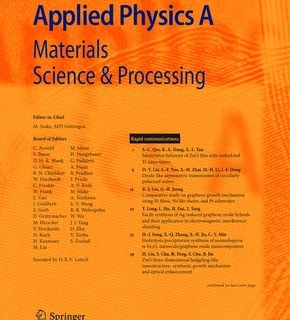The investigation of wrinkled ZnO as antireflective, protective, hydrophobic layer on the thermochromic VO2 films for smart windows
Abstract
Vanadium dioxide (VO2) is commonly employed in smart windows for its excellent thermochromic properties. However, its limited luminous transmittance (Tlum) and insufficient solar modulation capability (ΔTsol) have severely limited its commercial application. In this study, the VO2 films are prepared through rapid thermal annealing of the sputtered vanadium film on the quartz glass substrate. Then the wrinkled ZnO films are prepared as the antireflection layer on top of the VO2 films using the sol-gel method. The light propagation path on the films surface is altered by the wrinkled topology, trapping most light within the ridges and valleys, while reducing reflection and increasing light transmittance. Compared with single-layer VO2 films, the wrinkled ZnO/VO2 bilayer structure can significantly increase Tlum from 33.3 to 47.7%, ΔTsol from 5.6 to 7.9%, and decreases phase transition temperature (Tt) from 57.35 °C to 50.34 °C, the thermal hysteresis width (ΔT) from 14.8 °C to 12.78 °C. Furthermore, this structure exhibits an excellent water contact angle of 97.36 °, with its hydrophobic properties allowing ZnO films to function as a protective layer. Even after being exposed to air at room temperature for 60 days, the bilayer structure can still maintain its initial thermochromic performance. The results of this study provide new possibilities for improving the performance of smart windows.


 求助内容:
求助内容: 应助结果提醒方式:
应助结果提醒方式:


